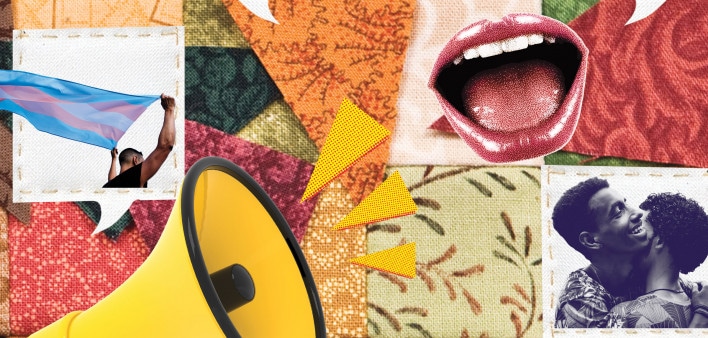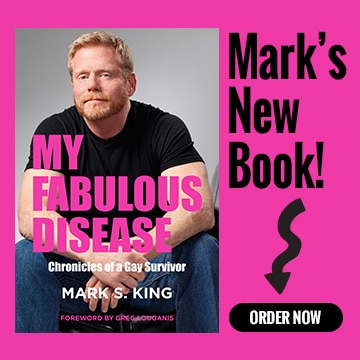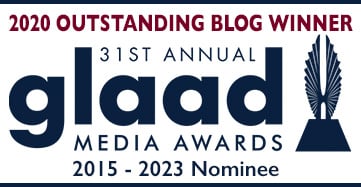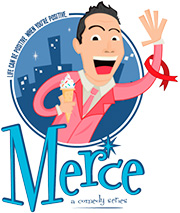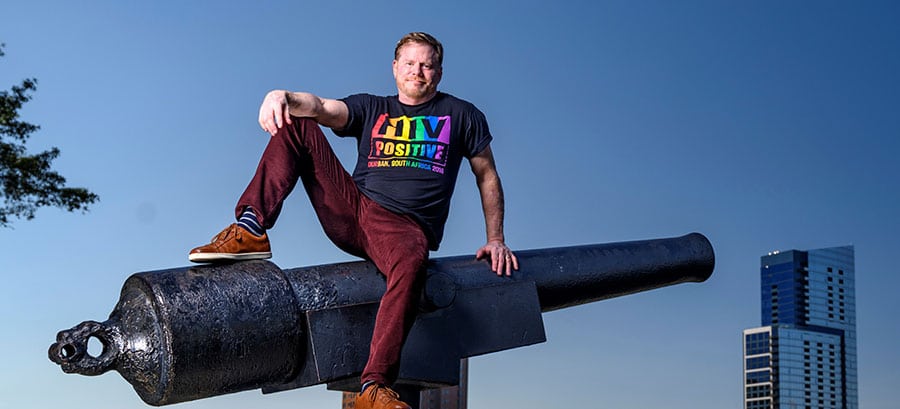And when you’re gone, who remembers your name?
Who keeps your flame?
Who tells your story?
Who tells your story?
Who tells your story?
— From the musical Hamilton
In March of 1985, I stood in the kitchen of my West Hollywood condo. The phone was attached to the wall, and I can remember how I nervously wrapped the cord up and down my fingers.
I was listening to a friend tell me the results of my HIV test. He was a nurse. Weeks earlier, he had secretly drawn my blood after his clinic had closed so we could keep the test results out of my medical records.
He told me my test was positive, and he wished me luck and hung up. I stepped toward my boyfriend, who had been watching the call, and he held me as I cried.
That’s the story I have been telling for more than 30 years. It’s not true.
I talked to that former boyfriend recently. He said we didn’t move into that condo until several months later, so I couldn’t have received the call there. Then he told me he doesn’t remember watching me get the results, wherever we lived, and that maybe he wasn’t actually there during the call.
I clearly remembered his loving embrace. I was certain of it.
Then I called my oldest friend. He remembers things like people and dates much better than I do. He confirmed that I was living in a previous apartment when I got the HIV results. He also remembers me calling him right away because I was alone when I got the news.
At long last, I have a memory based on truth, pieced together from the recollections of three different people.
Criminologists say witness testimony tends to become more confident the longer it has been since the incident; memories become baked in, regardless of their accuracy. It never occurred to me to reexamine what actually happened when I got those results. That cake has been baked and frosted for more than 30 years.
My mistaken memory is a little embarrassing to admit. Storytelling is kind of my thing. Maybe I romanticized the experience, or my memory placed my boyfriend nearby because his presence soothed the trauma of the moment. We’re not just selective in filtering our recollections. We can be reparative too.
Individually, we are all unreliable narrators, soaked as we are in ego and our singular perspectives. History teaches that we need multiple points of view to cobble together a clear picture of past events. If it took three of us to piece together one of the most significant days of my life, how many narrators will it take to create a reliable chronicle of the HIV epidemic as a whole?
The short answer: a lot. We need more people telling their stories to create a historical tapestry that is panoramic, revealing the entire picture. You, dear reader, are a part of the fabric of this tapestry, and you have a role to play in getting that history right.
***
Our HIV/AIDS chronicle began 40 years ago, when Michael Gottlieb, MD, and colleagues published a write-up in the Morbidity and Mortality Weekly Report, a publication of the Centers for Disease Control and Prevention. The article outlined unusual cases of pneumonia among five gay men. It was dated June 5, 1981.
You would be forgiven if you thought that the first article was in The New York Times or The New England Journal of Medicine, as many do. Because memory. See? It can trick anyone.
Forty years. That’s a long time for history to drift by. To chronicle it, there have been books, movies, plays, musicals, television shows, paintings and iconography, all created to tell the story. Most of it has been driven by dominant culture, meaning, in this case, that it has been largely funded by white guys to amplify the stories of other white guys. The nature of popular culture isn’t exactly democratic.
That’s a problem that we, as HIV advocates, must work to correct. Who gets to tell their story, and who, if anyone, is telling yours?
Case in point: Gregg Gonsalves, one of the profile subjects of the award-winning documentary How to Survive a Plague, recently expressed his growing discomfort with that film. The film’s portrayal of ACT UP New York as a collection of privileged white gay men troubled him greatly, he wrote in a post on his Facebook page, and it didn’t reflect his own experience of the group.
Activist Peter Staley, another of the film’s subjects, strongly objected to Gonsalves’s viewpoint, pointing out that the film simply reflected who made up the coterie of ACT UP’s activists at the time. The comment string that followed was a fascinating debate about whether or not ACT UP had a real diversity problem during those years or whether the film portrayed it that way by focusing on these men and overlooking the contributions of ACT UP members who weren’t white and gay.
Gonsalves and Staley were actually on the scene at the same time, and they strongly differ about how an Oscar-nominated film depicted their life experience. The only remedy to their debate is the inclusion of stories from others who were also there, like the women and Black activists who joined the Facebook string to provide their perspective.
Now is a good time to point out that the lack of prominent stories of our history from women and racial minorities isn’t for a lack of their trying. Their stories largely haven’t pierced through the bubble of popular culture for many reasons. An often-cited cause is that those stories committed the sin of taking place outside of major metropolitan areas. Books and other works from these folks will gratefully reveal themselves in a Google search of HIV, along with any demographic group that interests you.
In another half-century, historians will have examined and absorbed the chronicles at their disposal, the popular and the obscure, and their analysis will stick. If we want to rescue HIV/AIDS history from simplistic narratives that erase rather than include, those historians will need more artifacts to fill in the blanks. Any verdict that history might eventually levy about HIV/AIDS will be inaccurate as long as it is incomplete.
***
So now you have a job to do.
First, search out the stories of people unlike yourself. Buy the book, rent the movie, listen to the podcast, watch the webinar, soak in the art. Give some oxygen to the stories of underrepresented people. Attention must be paid.
Next, be a witness. Find a way to add your story to the spectrum. New forms of media have exploded in recent years, providing multiple opportunities. If you like to write, there are online outlets, including nearly all the HIV sites, that welcome first-person stories.
Or make an audio recording of your story—an oral history—on your phone and preserve it via social media or your local HIV/AIDS service organization or archive. You could host a Zoom meeting with other survivors and trade stories about your lives as people living with or affected by HIV. Record it, and submit it to an HIV/AIDS archive or post it on social media.
You don’t need to wait until the release of a book or movie that purports to tell your story. You lived it. Tell it yourself.
The benefits are greater than simply leaving something for posterity. Telling our stories is an act of empowerment. It can unleash a source of enormous strength.
Not everyone will be able to do this. Storytelling can bring up painful stuff that you haven’t yet processed, or perhaps sharing such stories might risk your personal safety. That makes it all the more important for the rest of us to step up if we are able.
Documenting our stories gives us an opportunity to reclaim the narrative of our own lives and turn it outward, using it as a tool to help other people. It transforms something tragic into a gift offered to others.
Time continues to drift by us. Every day, we are losing elders in our community, many of whom never had the opportunity to use the media tools now available to preserve their personal history. You do.
We all have our stories. Don’t let someone else be the unreliable narrator of yours.
Five Ways to Preserve Your Story
Submit a first-person story. POZ is one of several outlets that welcome first-person accounts from people living with HIV. The Well Project, The Body and others offer similar opportunities. If you think your story would fit in these brief (1,000 words or less) formats, this is the way to go.
Say it through art. Visual AIDS has been curating the work of people living with HIV for decades. It’s another kind of storytelling that might be right for you.
Find an HIV/AIDS archive. Do you have historical artifacts, like ACT UP gear or your 1987 test results or personal diaries? Several notable archives around the country might welcome your materials and take care of them for you. Some examples are the ONE Archives at the University of Southern California and the LGBT archives at Yale and Cornell. Publicly curated archives, like the African American AIDS History Project, are also great to browse online.
Write your memoir. You don’t need a book agent in this century, and self-publishing doesn’t have the stigma it once did. Print-on-demand companies will charge you as much as $1,000 to set up your manuscript, but it will get published and listed on Amazon and other bookselling sites just the same.
StoryCorps wants you. StoryCorps has recorded the stories of more than a half-million people, including many people living with HIV and their care providers. Most stories are conversations between two people, so grab a friend and check out the easily navigated site.
(As it appeared in the June 2021 issue of POZ Magazine.)

